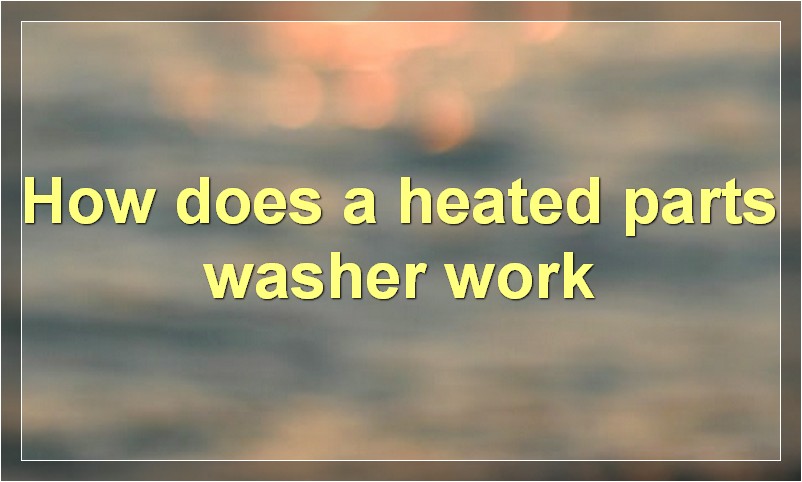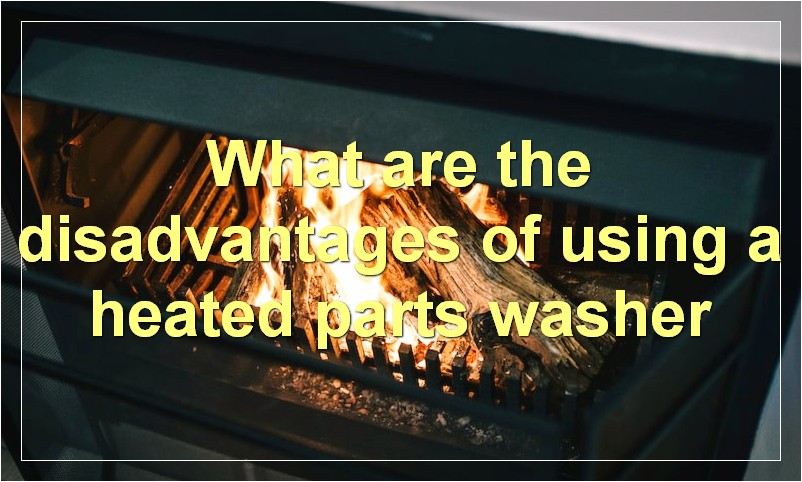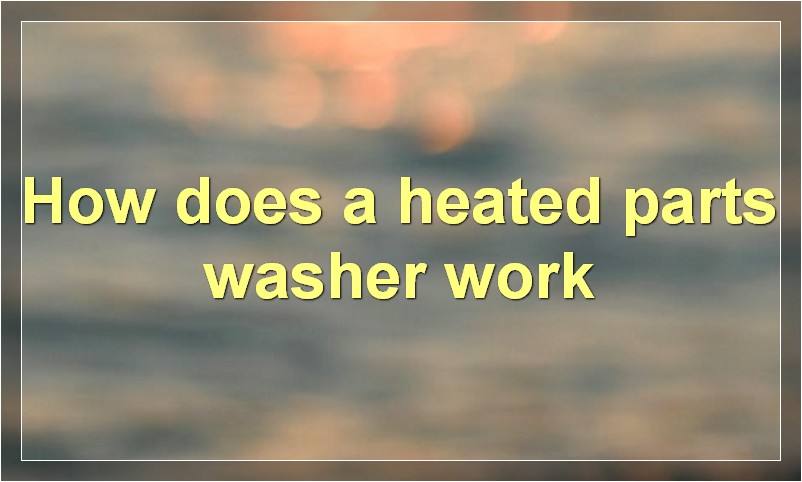Heated Parts Washer Benefits, Features, Advantages, And Disadvantages
If you run a business that relies on cleanliness, then you know how important it is to have a parts washer that can get the job done right. But what kind of parts washer is the best for your needs? Heated parts washers have many benefits, but there are also some disadvantages to consider.
What are the benefits of using a heated parts washer
If you work in an industrial setting, chances are you have come across a heated parts washer. Heated parts washers are specialized cleaning machines that use high temperatures to clean metal parts and components. There are many benefits of using a heated parts washer, which include:
1. Quick and efficient cleaning – Heated parts washers use hot water or steam to quickly and efficiently clean metal parts. This is especially beneficial if you are working with dirty or greasy parts.
2. Safe for sensitive parts – Some metal parts are sensitive to high temperatures. With a heated parts washer, you can safely clean these types of parts without worrying about damage.
3. Reduced water usage – Heated parts washers use less water than traditional cleaning methods, such as power washing. This is beneficial from both an environmental and financial standpoint.
4. Improved worker safety – When using a heated parts washer, there is no need for workers to be in contact with dangerous chemicals or fumes. This helps to create a safer working environment.
5. Increased productivity – Heated parts washers can help to increase productivity in the workplace by reducing downtime for cleaning. This allows workers to focus on other tasks, which can lead to increased efficiency.
How does a heated parts washer work

A heated parts washer works by heating the cleaning solution to a high temperature. This allows the solution to break down and remove dirt, grime, and other contaminants from the parts. The high temperature also helps to kill bacteria and other microorganisms that may be present on the parts.
What are the features of a heated parts washer
A heated parts washer is a device that is used to clean metal parts and components. The device uses hot water or steam to remove contaminants from the surface of the parts. Heated parts washers are available in a variety of sizes and configurations to accommodate different types of applications. Some features of heated parts washers include:
-Heated water or steam: The device uses hot water or steam to remove contaminants from the surface of the parts.
-Adjustable temperature: The temperature of the water or steam can be adjusted to accommodate different types of metals and cleaning applications.
-Pressurized system: The device uses a pressurized system to deliver the hot water or steam to the surface of the parts.
-Safety features: Heated parts washers typically include safety features such as automatic shut-off, overheat protection, and pressure relief valves.
What are the advantages of using a heated parts washer
There are many advantages to using a heated parts washer. One advantage is that it can help remove tough stains or deposits from metal parts. Another advantage is that heated parts washers can help prevent corrosion on metal parts. Additionally, heated parts washers can also help dry parts more quickly than non-heated washers.
How does a heated parts washer help to clean parts
A heated parts washer is a type of cleaning equipment that uses hot water or steam to clean industrial parts and components. The high temperatures help to loosen and remove deposits of grease, oil, dirt, and other contaminants from the surfaces of the parts. Additionally, the hot water or steam can penetrate small crevices and spaces on the parts, providing a more thorough cleaning.
What are the disadvantages of using a heated parts washer

There are a few disadvantages to using a heated parts washer. First, if the parts washer is not properly ventilated, fumes from the cleaning solution can build up and be dangerous. Second, if the parts washer is not cleaned regularly, it can become a fire hazard. Third, if the heating element fails, the parts washer can overheat and damage the parts being cleaned.
How does a heated parts washer compare to other types of parts washers
There are many types of parts washers on the market, but how does a heated parts washer compare? Heated parts washers use hot water or oil to clean parts, and can reach temperatures up to 200 degrees Fahrenheit. This high temperature allows for a more thorough cleaning of parts, and also helps to break down oils and grease that may be on the parts. Heated parts washers can also help to remove rust from parts.
Other types of parts washers include cold water parts washers and ultrasonic parts washers. Cold water parts washers use, you guessed it, cold water to clean parts. This lower temperature doesn’t allow for as thorough of a cleaning as a heated parts washer, but is better for delicate parts that might be damaged by the heat. Ultrasonic parts washers use sound waves to create cavitation bubbles in the cleaning solution, which agitates the solution and helps to remove dirt and grime from parts.
So, which type of parts washer is right for you? It depends on what you’re cleaning and how dirty the parts are. If you need a thorough cleaning for heavily soiled parts, a heated parts washer is the way to go. If you’re cleaning delicate parts or parts that are not very dirty, a cold water or ultrasonic parts washer might be a better option.
Is a heated parts washer worth the investment
How do I choose the right heated parts washer for my needs
When it comes to choosing the right heated parts washer for your needs, there are a few things you need to take into consideration. First, what is the size of the parts you need to clean? Second, what is the type of cleaning solution you need to use? And third, how often will you need to use the parts washer?
Here are a few tips to help you choose the right heated parts washer for your needs:
1. Consider the size of the parts you need to clean. If you have large parts that need to be cleaned, then you will need a larger parts washer. However, if you only have small parts that need to be cleaned, then you can get away with a smaller parts washer.
2. Consider the type of cleaning solution you need to use. If you are only going to be using water-based cleaning solutions, then you can get away with a smaller parts washer. However, if you are going to be using solvent-based cleaning solutions, then you will need a larger parts washer.
3. Consider how often you will need to use the parts washer. If you only need to use the parts washer once in a while, then you can get away with a smaller parts washer. However, if you are going to be using the parts washer on a regular basis, then you will need a larger parts washer.
How do I properly maintain my heated parts washer
A heated parts washer is a great way to clean your parts without using harmful chemicals. However, if not properly maintained, a heated parts washer can become a fire hazard. Here are some tips on how to properly maintain your heated parts washer:
-Inspect the washer regularly for any signs of wear and tear, and replace any damaged parts immediately.
-Make sure the area around the washer is clear of flammable materials, and do not store anything combustible inside the washer.
-Keep the lid closed when the washer is not in use, and do not allow children or pets near the washer when it is in operation.
-Have the washer serviced by a qualified technician every few years to ensure it is operating safely and efficiently.

